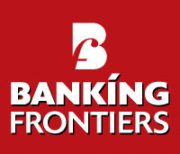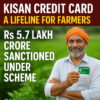Highlights of a study published by Nepal Rashtra Bank in December 2022:

9361 adults across all 77 districts in Nepal were selected for the study spread across urban, semi-urban and rural areas. Financial literacy was measured along dimensions of knowledge, behavior and attitude. It covered usage of products relating to payment, saving, investment, insurance products and credit. The survey revealed an overall score of 57.9%, financial knowledge score of 47.3%, financial behavior score of 63.5% and financial attitude score of 64.1%.
Variations
Bagmati province had the highest financial literacy score, whereas Madhesh province scored the lowest. Males scored 7.5% points higher than females for financial literacy and by 17.9% points for financial knowledge. The financial literacy score of people of age 18- 30 years is 63.2% compared to 27.9% of people of age 60 years and above. Financial literacy score of top income group is 68% compared to just 51%in the lowest income group. Salaries/wage employee and self-employed have higher financial literacy score 64%, compared to that of housewife (51%) and unemployed and not seeking employment (47%). People involved in education have financial literacy score of 76%, while people involved in agriculture have financial literacy score of 57%.
Usage
The survey reveals that among adults, 74% use payment products, 87% use saving, investment or retirement products, 46% use credit products and 30% use insurance products. Within credit, bank loans are limited to just 17.6% of the adult population. See Graph 1.
Insurance Usage
 The survey finds that 30% of adult populations have insurance products. Non-life insurance penetration is lower compared to life insurance penetration. At the national level, 27% of adult have life insurance product as compared to 8.5% for non-life insurance product. The usage of insurance product increases with income level. About 73% of people with master’s degree and above use insurance products compared to just 16% of illiterate people. 29% of people in the agriculture sector have insurance products, compared to 71% in the financial sector.
The survey finds that 30% of adult populations have insurance products. Non-life insurance penetration is lower compared to life insurance penetration. At the national level, 27% of adult have life insurance product as compared to 8.5% for non-life insurance product. The usage of insurance product increases with income level. About 73% of people with master’s degree and above use insurance products compared to just 16% of illiterate people. 29% of people in the agriculture sector have insurance products, compared to 71% in the financial sector.
Credit Usage
Middle age population has the highest usage of credit products. Only 31% of lowest income people use credit products while 52% of highest income group people use credit products. Only one third of illiterate population uses credit products, while 24% of students use credit. Individuals from agricultural and construction have the lowest usage of credit.
Graph 2 shows the co-relation between financial literacy and product usage. The usage of financial products increases with increasing financial literacy score. However, the marginal contribution of financial literacy score on the usage of financial products is much higher at lower level of financial literacy than at higher level.
See the full report at https://shorturl.at/qszP0
Read more:
Digitally Fulfilling Credit Gap








